(The following is based on the discourses of the Nesivos Shalom in his Kuntress L’Chanukah.)
Perhaps one of the most familiar chapters of mishnayos is the second chapter of Maseches Shabbos, known as “Ba’meh Madlikin” (for its opening words). This chapter, customarily recited during the service of Kabbalas Shabbos, relays the laws governing the lighting of the Shabbos candles. Its beginning section focuses primarily on the materials that are deemed acceptable to be used for the wicks and oil, as the Mishnah delineates (2:1):
בַּמֶּה מַדְלִיקִין וּבַמָּה אֵין מַדְלִיקִין. אֵין מַדְלִיקִין לֹא בְלֶכֶשׁ, וְלֹא בְחֹסֶן, וְלֹא בְכָלָךְ, וְלֹא בִפְתִילַת הָאִידָן, וְלֹא בִפְתִילַת הַמִּדְבָּר, וְלֹא בִירוֹקָה שֶׁעַל פְּנֵי הַמָּיִם. וְלֹא בְזֶפֶת, וְלֹא בְשַׁעֲוָה, וְלֹא בְשֶׁמֶן קִיק, וְלֹא בְשֶׁמֶן שְׂרֵפָה, וְלֹא בְאַלְיָה, וְלֹא בְחֵלֶב…
“With what may we light, and with what may we not light? We do not light using (as a wick) fibers of cedar, uncombed flax, silk residue, willow-fibers, desert grass, nor algae; (regarding oil, we do not use:) pitch, wax, cottonseed oil, oil of defiled terumah (that which was separated for presentation to the kohein), tail-fat, or (regular) fat…”
Different Festivals, Different Standards
Now, the corresponding chapter of Ba’meh Madlikin in the Gemara is likewise fairly well-known, but for a different reason. Namely, this is the chapter that contains the bulk of the material in Talmud Bavli that deals with the laws governing the festival of Chanukah.
One of these relates, as well, to accepted lighting materials; and in this respect, we find a sharp contrast between the lights of Shabbos and those of Chanukah. As the Gemara states: פְּתִילוֹת וּשְּׁמָנִים שֶׁאָמְרוּ חֲכָמִים אֵין מַדְלִיקִין בָּהֶן בְּשַׁבָּת מַדְלִיקִין בָּהֶן בְּחֲנוּכָּה – “Those wicks and oils that the Sages said should not be used for kindling the Shabbos lights may nonetheless be used for kindling the Chanukah lights” (Shabbos 21b). On a technical level, the reason these materials are not qualified for Shabbos usage in the first place has more to do with the low quality of the flame they produce, which could lead to further Shabbos violations. Such considerations obviously would not be applicable to a regular day of Chanukah. However, as we shall see, the difference between Shabbos and Chanukah in this regard may be understood on an even deeper level, one that is quite revealing of the nature of this festival.
There are, to be sure, other differences between the Shabbos and Chanukah candles. One of these relates to the matter of placement. Somewhat curiously, we find that the Chanukah candles are, ideally, to be placed at a relatively low height – within 10 tefachim (handbreadths) of the ground (Ibid.). No such limitation applies to the Shabbos candles, which can be lit at a much higher level. Moreover, we find regarding the Chanukah lights that the ideal fulfillment of the mitzvah (not always observed nowadays for various reasons) takes place out of doors. But whereas the Chanukah lights are to be placed on the outside of the house, those of Shabbos are intended specifically for indoors, to provide the house with light and promote an atmosphere of tranquility in the household. What could account for such distinctions?
A key revelation is provided by the saintly Chassidic figure R’ Nachum of Chernobyl in his classic work Me’or Einayim. He perceives the unique feature of Chanukah in terms of its reach; that is, there are certain Yidden who may be lost or forlorn, occupying an exceedingly low rung on the spiritual scale. Such individuals, by dint of their misdeeds and poor spiritual mettle, may be unable to absorb the sacred lights that emanate in connection with certain festivals or holy days. But the light Hashem dispenses on Chanukah is such that it envelops everyone – from the loftiest souls to those on the lowest level.
This, the Me’or Einayim explains, is the significance of the ten-tefach requirement. We find in the teachings of Chazal that the height of ten tefachim from the ground operates as a “restricted zone” of sorts. Whereas Hashem does deign to allow His Shechinah to rest at certain points on this earth – such as on the Aron Hakodesh (Holy Ark of the Temple) – this generally takes place above ten tefachim. Thus, the Aron itself was nine tefachim high, with an added tefach for the Kappores (Covering); for, as Chazal conclude, “the Shechinah does not rest its Presence lower than ten tefachim” (Sukkah 5a). However, it appears that Chanukah is the one exception. While it is true that the Shechinah aims to stay away from this zone, which is generally relegated to the spiritual forces of darkness and impurity, the radiance of the Chanukah lights reaches even there. What emerges, then, is that the act of lighting “below ten” reflects the fact that on Chanukah, even the lowliest elements are included in this sacred illumination and are uplifted closer to Hashem. Similarly, the lighting takes place “outside,” as the light is directed even toward the “outsiders” – those individuals who are otherwise distanced and spiritually forlorn.
The Sabba Kaddisha of Lechovitz explains the halachah cited above (regarding the wicks and oils) as likewise reflecting this idea. He understands, in a homiletic sense, that the “wicks and oils” actually refer to people – those Yidden whose bodies and souls have not yet been sufficiently refined to receive spiritual elevation. When it comes to a day like Shabbos, whose essence is of a supreme loftiness, they unfortunately lose out. Of course, they are still obligated in the observance of the day; but they remain virtually unmoved and unaffected by the spiritual grandeur of the day. But even such people – that is, the “wicks and oils… that are ein madlikin bahen b’Shabbos (not designated for the illumination of Shabbos),” are nevertheless subsumed within the illumination of the Chanukah lights: “madlikin bahen b’Chanukah.”
Echoing a similar theme, the Toras Avos portrays the different festivals by way of a parable involving a king whose son lives far away. Shabbos is the most supreme; it is comparable to a situation whereby the king brings his son back to the royal palace, to visit with him in his own private chambers. On yom tov, the king pays a visit to his son at the latter’s own location. But Chanukah can be likened to a different situation – in which the king’s son falls into a cesspool and is in danger of drowning. No one else is about who can rescue him; and so, without hesitating for a moment, the king himself, in his royal robes, must descend into the pit to save his beloved son and bring him back to safety and back home. This is the essence of Chanukah, whereby Hashem sends His Divine light even to the area of “below ten tefachim” to shine forth on the lowliest of His children.





